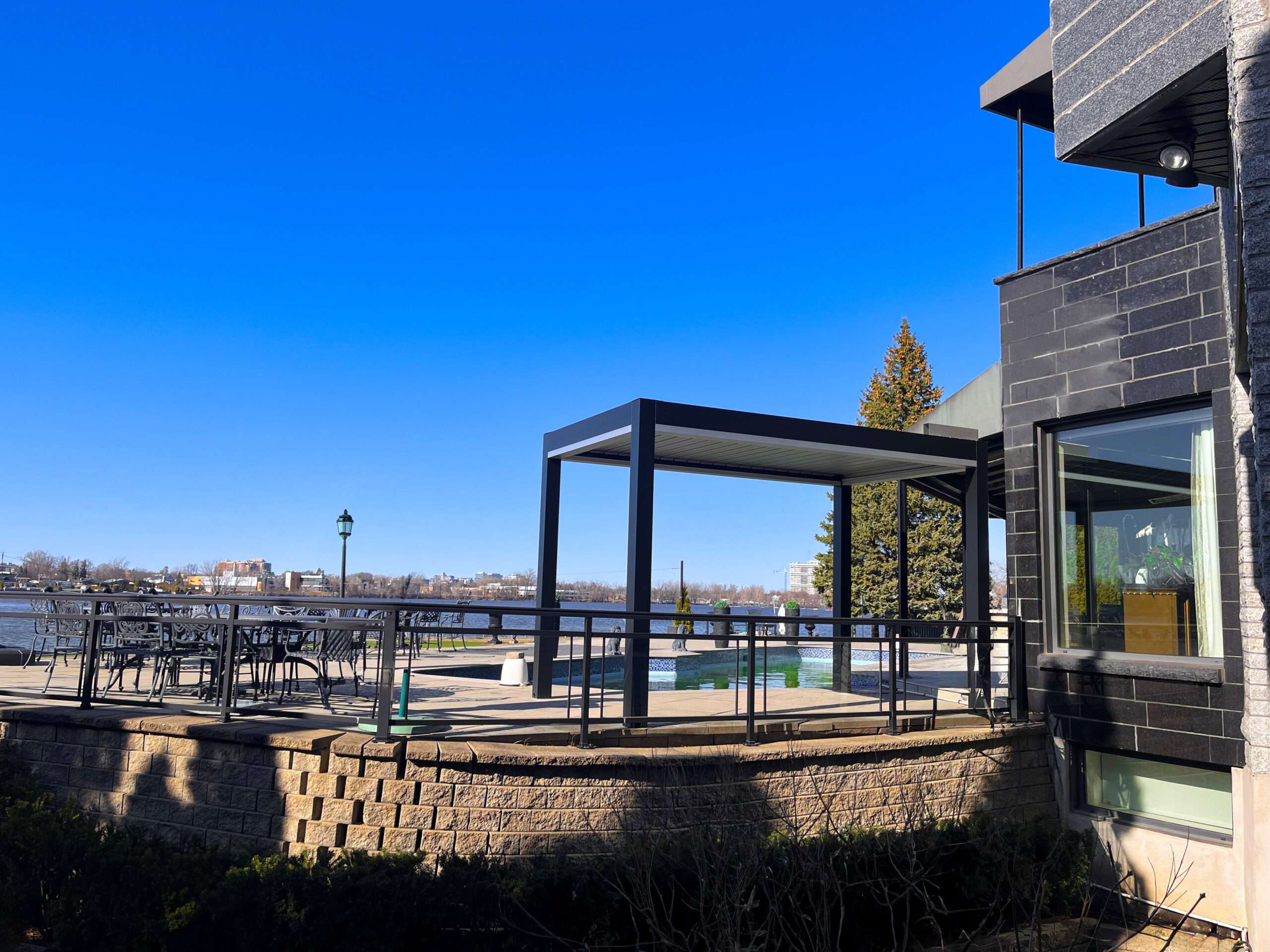Today, outdoor design is no longer limited to decorating our terrace or patio to make them more attractive. It is about transforming our outdoor space into a place that extends our summer, harmonizes with the style of our home, as it is an extension of it, and allows us to control the light while protecting us from rain and mosquitoes. Since the mid-20th century, outdoor structures have undergone a remarkable transformation, combining technological advances, innovative materials, and sophisticated design. In this article, we take you on a journey through time to understand how these structures have evolved, from the first wooden pergolas to today’s smart structures.
Traditional origins (1950–1970): Craftsmanship and noble materials
During this period, outdoor structures were mainly built using natural materials such as solid wood, wrought iron, or hand-painted steel. Designs were generally ornamental, influenced by classical European architecture. Pergolas and gazebos were mainly used to provide shade and add aesthetic appeal to gardens and terraces.
These installations were fixed, without moving mechanisms, and required regular maintenance to preserve their beauty and durability. Comfort was basic, with no control or adaptation to weather conditions.

The era of synthetic materials and functionality (1970–1990)
With the advent of aluminum and weather-resistant plastics, structures became lighter, more robust, and easier to maintain. This period marked the beginning of a substantial shift toward more refined and functional structures.
Canvas and sunshades were manual systems, using rollers or cranks, and offered a temporary solution. Design became less ornamental and more suited to modern usage needs.

Technical innovation and the rise of motorization (1990–2010)
The arrival of waterproof, UV-resistant, and durable fabrics made it possible to develop more effective outdoor structures. Extruded aluminum became the material of choice because it combines strength, lightness, and durability.
Motorization systems made their appearance, revolutionizing the ease of use of pergolas and awnings. Remote control became the norm in high-end pergola and awning installations, making them easier to use.
During this period, the first bioclimatic pergolas appeared, although they were handmade and not very mobile.

The era of functional and connected design (2010–2020)
This decade was marked by the rise of bioclimatic pergolas, equipped with adjustable slats that allow for precise control of light and ventilation and offer protection from rain and UV rays. These pergolas are generally motorized and can be controlled using a remote control or mobile apps.
Design became a central element: clean lines, high-end finishes, and harmonious integration with the architecture of the home. Structures became modular, allowing the covered space to be enlarged or reduced as needed.
Another type of protection was integrated: crank-operated curtains that offer better protection against wind and mosquitoes, for a more complete and comfortable outdoor experience.

By 2025: An immersive, sustainable, and smart outdoor experience
Today’s outdoor structures incorporate ultra-lightweight, durable, and eco-friendly materials that offer better weather resistance and reduce carbon footprints.
Technology is present in the pergola and its accessories: LED lighting, motorized retractable shades, integrated audio systems, and control via a mobile app. These innovations enable automated and personalized management of the comfort of our outdoor space, ensuring an optimal experience throughout the year. The design is focused on luxury, with advanced customization options tailored to the specific tastes and needs of each customer.

Why choose a modern structure for your outdoor space?
There are many advantages: increased property value, extended use of the terrace, reduced energy costs, and, above all, the creation of an elegant and comfortable space.
Brands such as Ombrasole perfectly embody this evolution by offering products that combine Italian craftsmanship, local manufacturing in Quebec, and cutting-edge technology.
Conclusion
The evolution of outdoor structures, from traditional pergolas to today’s smart, customized solutions, reflects a constant quest for comfort, functionality, and aesthetics. To fully enjoy your outdoor spaces all year round, it is essential to choose an extruded aluminum structure that adapts to your needs and enhances your environment.
Ombrasole supports you in this process with high-end, innovative solutions.
MOST RECENT
Read our latest articles
All you need to know about custom made awnings, outdoor canopies maintenance, decoration and more.



